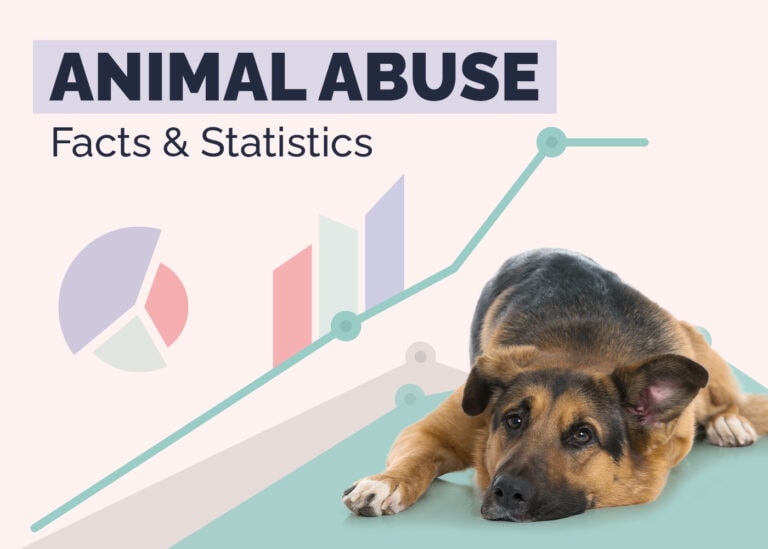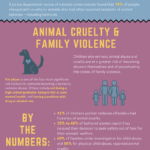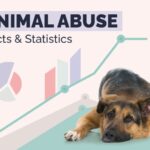Animal cruelty is an affront to our moral compass, reflecting a society’s disregard for sentient beings that share our planet. As we navigate through 2025, a sobering array of statistics has emerged, shedding light on the stark realities faced by animals worldwide. These statistics do not merely speak of numbers; they echo the silent suffering of countless beings. Understanding these figures is crucial for catalyzing change and fostering empathy toward animals in our communities.
Consider this: an estimated 1 million animals are abused every year in the United States alone. This figure, astonishing as it is, merely scratches the surface of a much deeper issue. Many cases of abuse go unreported, obscuring the true extent of the problem. The various forms of abuse encompass neglect, physical harm, and psychological torment, each of which has dire consequences not only for the animals but also for society at large.
Neglect stands out as one of the leading forms of abuse, comprising more than 65% of reported cases. This alarming statistic highlights the overwhelming number of animals left without basic necessities such as food, water, and shelter. The ramifications of neglect are devastating—it leads to malnutrition, disease, and a staggering premature death rate among these innocent beings. Each number represents a life, a story, and profound suffering.
Physical abuse, while perhaps more readily understood, is just as harrowing. Reports indicate that approximately 30% of animal cruelty cases involve intentional harm, including beating, shooting, and other forms of aggression. This brutality is often fueled by unchecked rage and a fundamental misunderstanding of animal behavior. The fact that humans can inflict such suffering on a creature unable to defend itself draws us to a crossroads: how do we, as a society, contribute to or combat this?
A particularly grim reality is the connection between animal abuse and human violence. A startling 71% of individuals who commit acts of violence against animals are also likely to engage in violent acts against humans. This interconnectedness forces us to reconsider our approach to violence as a whole. Those who harm animals may often do so as a means of expressing deeper issues, including emotional or psychological instability. Thus, the conversation surrounding animal abuse is inextricably linked to wider societal issues concerning mental health and violence prevention.
As we delve deeper, the statistics around specific types of animal abuse present a vivid landscape of suffering. For instance, in the realm of dog fighting—a heinous underground sport—estimates suggest that there are over 40,000 active participants engaging in this gruesome activity across the United States. Each dog involved is subjected to brutal training regimes, often leading to severe injuries and death. This statistic not only showcases a rampant disregard for animal welfare but also reflects a broader societal acceptance of violence in entertainment. What does it say about us when we allow such spectacles to persist?
The plight of farm animals introduces another layer to this chronic dilemma. Approximately 95% of animals raised for food are subjected to factory farming methods that prioritize profit over welfare. Chickens, pigs, and cows live in appalling conditions, often confined to spaces so small they cannot turn around. The statistic that more than 9 billion animals are slaughtered for food annually in the U.S. alone leaves a chilling impact. How can such systematic cruelty be reconciled with our moral obligations to other living beings?
Moreover, the pet abandonment crisis has reached unprecedented levels. In recent years, an alarming number of pets enter shelters each year, with estimates reaching 6.5 million animals in the United States. Tragically, approximately 1.5 million of these animals are euthanized, often due to overcrowded shelters and insufficient resources to care for them. This grim reality speaks not only to individual irresponsibility but also to a societal failure to foster a culture of compassion and responsibility toward pets.
This cavalcade of statistics culminates in an urgent call to action. Each figure presented represents not just numerical data, but lives torn apart by human hands. These animals depend on us to advocate for their wellbeing and to transform this cycle of abuse into one of protection and advocacy. Seeking justice for these voiceless beings must become a societal priority, encompassing everything from legal reform to public awareness campaigns.
In closing, the shocking statistics surrounding animal abuse in 2025 present a compelling opportunity for introspection and action. By understanding the harrowing realities faced by animals, we ignite an inner resolve to challenge the status quo. Only through collective awareness and effort can we hope to extinguish these flames of cruelty. It is time to broaden our understanding and redefine our relationship with animals, fostering a world where compassion reigns victorious over cruelty.
Let these statistics serve as a foundation for fostering empathy, awareness, and, ultimately, change. The time for action is now. Together, we can shift the narrative and create a legacy of kindness and respect for every creature that inhabits our world.










